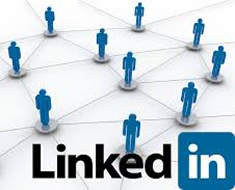Google Penguin And The Google Zoo
- Donna Fisher
- October 7th, 2016
A few weeks ago, I wrote about Google Panda and it’s place in the Google Zoo for SEO rankings. Panda evaluates the quality of content on your websites and link building content. This is intended to improve consumer experiences and provide higher quality content, as opposed to content that has simply been stuffed with keywords. Google Penguin is another algorithm used to rank content. Rather than scoring content as Panda does, Penguin evaluates links. This is intended to counteract the efforts of black-hat SEO tactics that build link schemes in order to boost SEO. How does this affect you and your website?

The next creature in the Google Zoo - Google Penguin
Black-Hat Tactics
Black-hat SEO makes use of the anonymity of data in order to increase SEO rankings. When it comes to link building, Penguin is designed to ensure that only quality links are provided. Black-hat strategies have provided sketchy links in the past that are often in the category of blog spam. Webmasters will buy link directories in order to boost their customers’ website rankings. The problem with this is that the links may be of low quality, providing no useful service or information other than providing a link. Once Google Penguin identifies this activity, it yanks the ranking.
Many people still grieve over the loss of site badges. These were links to your site that your visitors could place on their own website. However, these are no longer in compliance with Penguin’s algorithm.

Your Product badge has to stay home.
Webmasters
Most websites are managed by webmasters. A small percentage of internet users develop their website and maintenance from the ground up and take responsibility for the off-page SEO. The majority of us use existing templates, trusting the system to keep our website fresh and ranked. Campaigns to improve rankings will involve linking to your website. If you are informed about your webmaster’s methods of linking, you can be more confident that you won’t suddenly disappear from browser pages, blocked for breaking Google’s Webmaster Guidelines.
Have you ever followed a link only to find yourself on a single page offering to let you buy something? Penguin doesn’t like that, and when it catches the link, it will downgrade it. Similarly, link bombing is frowned upon. This is the tactic of manipulating data so that a website ranks for unrelated search terms.
When Google Penguin was activated in 2012, it began filtering out these links and penalizing websites that used these methods to build rankings. There have been several updates to Penguin, the latest one being Penguin 7, or Penguin 4.0, on September 23, 2016. This is the first update in nearly 2 years.
Google Penguin is at the Core
Now, rather than just an accessory to be considered in SEO, Google Penguin is actually a core part of the SEO algorithms. The newest version of Penguin provides for real-time changes. If your website is tagged by Penguin, it can now be quickly reinstated once the problem is fixed, rather than just sitting there indefinitely.

Algorithms are confusing.
Penguin evaluates your incoming links. Your webmaster has to check each and every link to make sure it is a quality link. Experts advise that you don’t assume that a link is legitimate just because of the domain. For example, most people think the .edu domains are safe, but many students post garbage and sell the link just to make money. Even well-respected journals sell links, and buying one of these links is no guarantee of quality content. You have to check each one.
How to Fix Problems
If you get tagged by Google Penguin, there are some fixes. First of all, do a link audit. Any low-quality links, or links that could be considered spam, should either be removed or disavowed. Even if a link has a “nofollow” label, you need to disavow it, because the nofollow could be removed at any time, and you will have no warning. You may have used a promotional link years ago in exchange for pay or product. If you have not disavowed this link, you could be penalized for it.
There are tools, also, that will identify links to your website. However, some websites have blocks to keep these tools from working.
If someone has linked to your site and you don’t want them to, you have to ask them to remove their link. Again, a nofollow will help for the short term, but it is no guarantee that it won’t come back. These owners may refuse to remove the link or expect you to pay to have the link removed. Don’t pay them. Add them to your disavow file. Each disavow file supplants the one filed before it, so each file should have all of the links you disavowed previous to the latest submission.
Check with your webmaster regarding his or her approach to Google Penguin. You may find ways to improve your SEO ranking.


